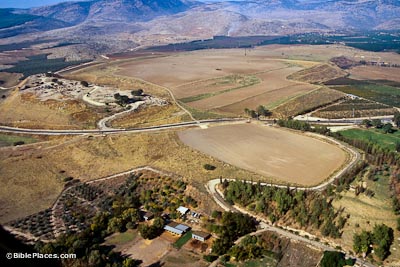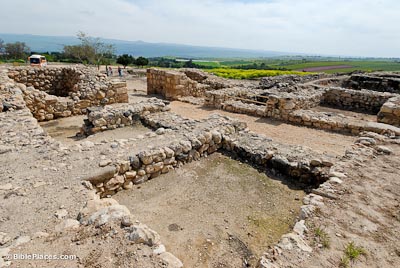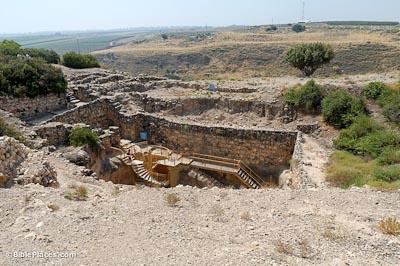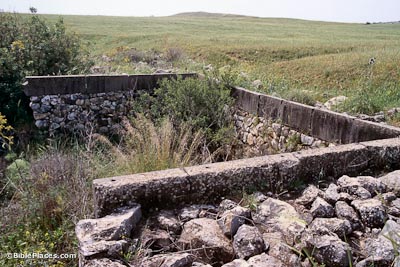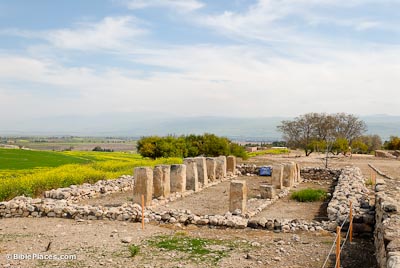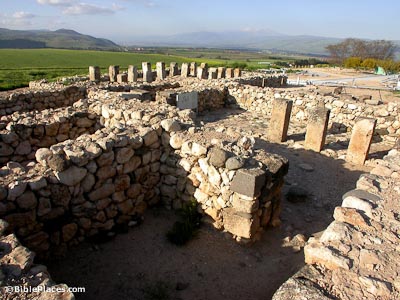Hazor
Also known as Tel Hazor, Tell al-Qadah, Tell el-Qedah, Tel Khuraibeh, Hazzur, Waqqas
The Largest Tell
Known in Joshua’s day as “the head of all those kingdoms,” the tell of Hazor is today the largest in Israel at 200 acres (80 ha).
At its height in the Canaanite period, the city encompassed the entire tell. Later when it was inhabited by Israelites, the fortified city included only the Upper City.
Solomonic Gate
Archaeologists have uncovered a six-chambered gate at Hazor, which is nearly identical in size and design to gates at Megiddo and Gezer.
The best explanation for this is that these gates were all built by the same government. These gates are a remarkable testimony to Solomon’s building activity as described in 1 Kings 9:15.
Water System
A century after Solomon’s time the Israelites built a massive shaft 130 feet (40 m) deep into the tell, reaching the water table below.
The 62 foot (19 m) vertical shaft was about 50 square feet (4.6 sq m) and ended at a wide, sloping stepped tunnel that led another 82 feet (25 m). This system is similar to those at Megiddo and Gibeon.
Canaanite Building
Some of the most impressive remains from Hazor date to the Middle and Late Bronze Ages when the Canaanites lived in the city.
Many structures in the Lower City were cultic structures and included religious figurines or standing stones. Some buildings were lined with basalt orthostats.
Storehouse/Stable
This type of building, better known as an Israelite tripartite pillared building, has been found at numerous sites throughout the country.
Many functions for this type of structure have been suggested. Some archaeologists believe that these were used for the storage of food; more likely, the primary function of this building was for housing the royal cavalry.
Four-Room House
This popular building style would be better known as a “pillared house” than by the number of rooms in it. Found throughout Israel from the time of the settlement of the Israelites, the number of rooms in the dwelling may vary, but always it is characterized by a row or two of pillars separating the central court from the side room.
Download all of our Galilee and the North photos!
$39.00 $49.99 FREE SHIPPING
